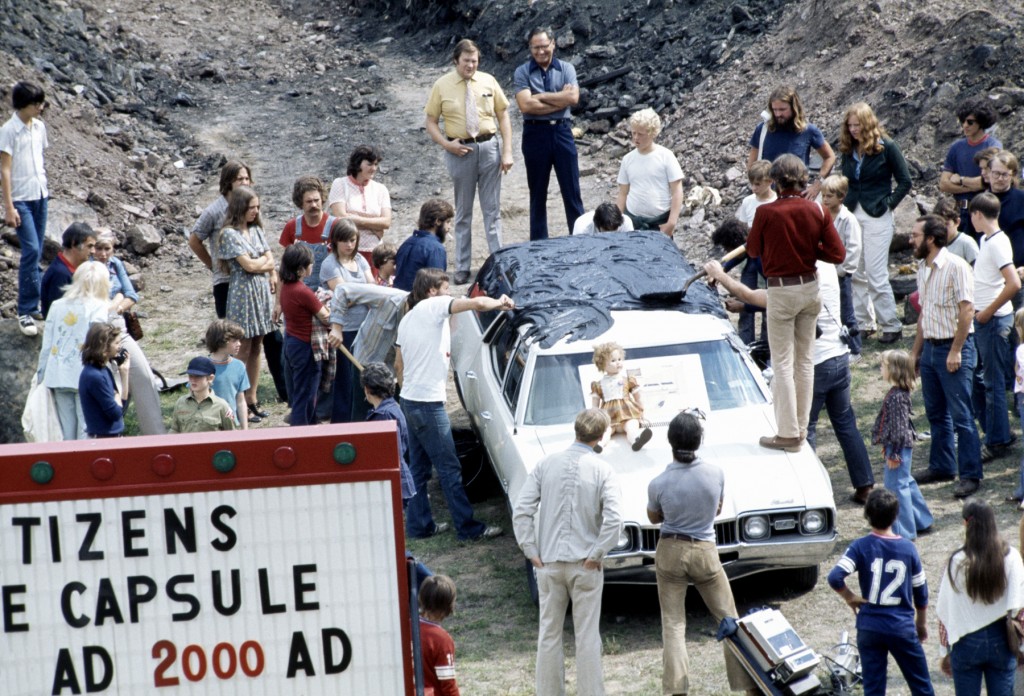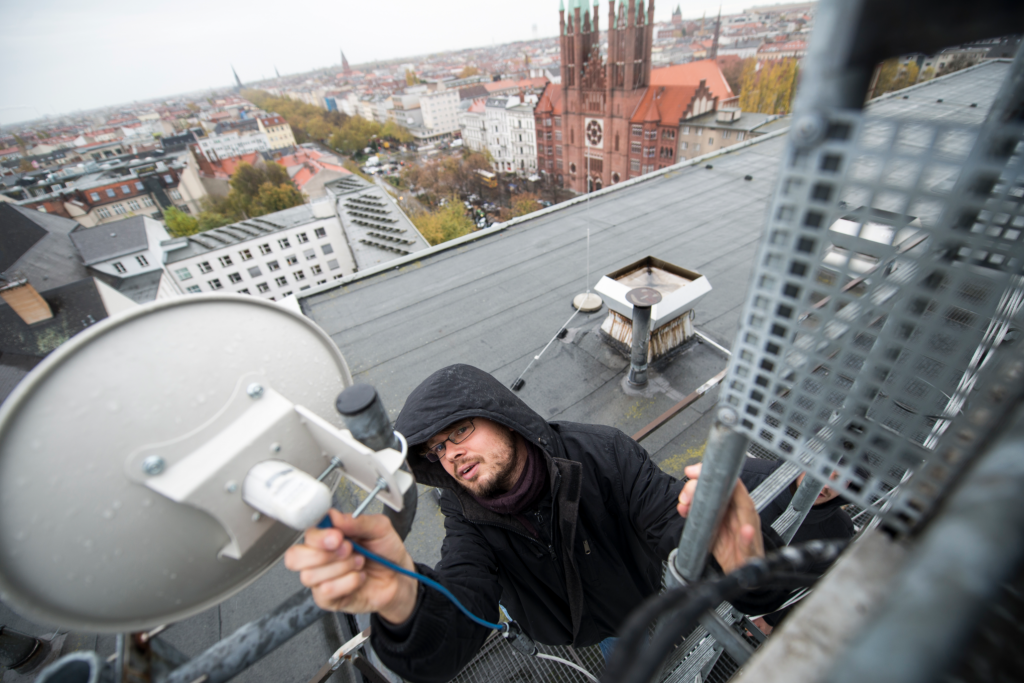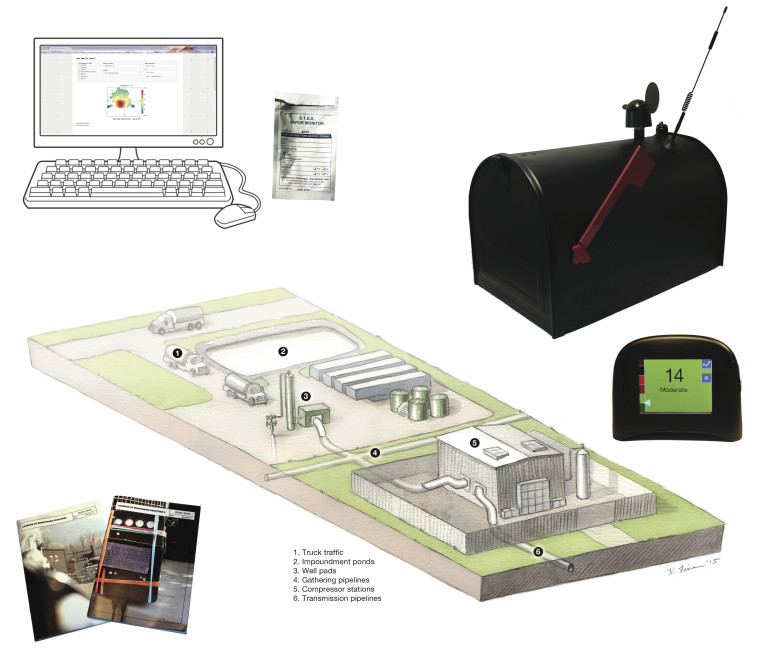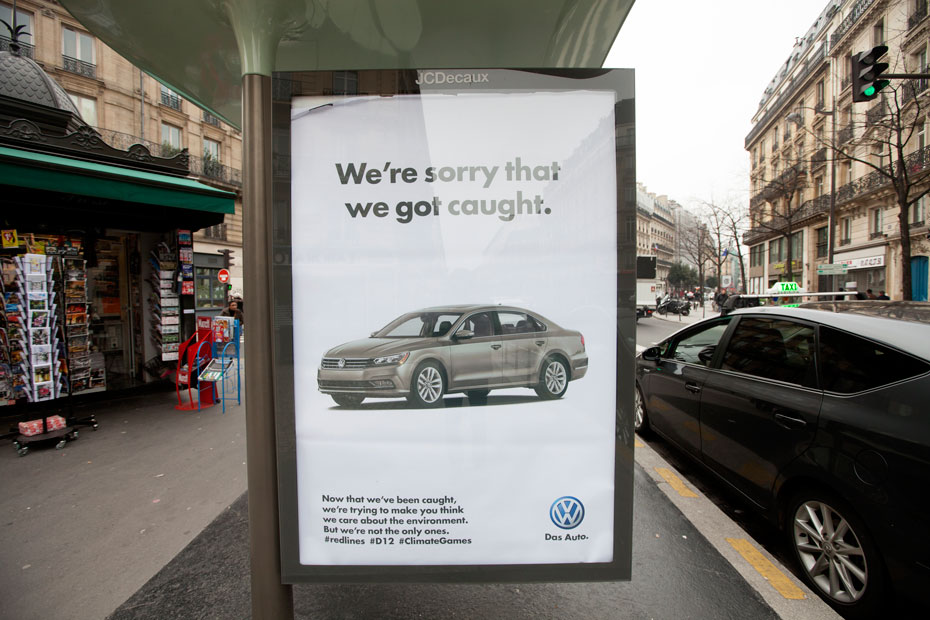WEATHER | THEORY
in collaboration with W/6 LAYOUT TO LAUNCH (Jol Thomson)
Ant Farm, OldsMobile Time Capsule, 1975, at ArtPark in Lewiston, N.Y.
Photo by Chip Lord and Curtis Schreier.
Syllabus | Summer Semester 2016
This semester’s curriculum takes place in the “expanded field” of the city of Braunschweig and its surrounding regions. Students will work individually or form small groups (no more than 3) and complete semester-long research and collaboration with one of a few communities. The projects will be organized through different “models” or “diagrams” of artistic collaboration. The projects will be selected, and groups formed by April 22nd. Your former “cubic metre of Busch” websites will host your work and progress. The final material will be presented in the IAK Final Exhibition in July, 2016.
Requirements for Spring Semester 2016:
- Telling Stories
The group will pick one interesting “site” or “context” in or near Braunschweig. This site should be a place where the environment has become a “matter of concern”. In other words, a place where people, landscape, creatures and technologies have all become implicated in a problem or issue (ecology, psychology, politics, social, etc). The group will tell the story of this site and its diverse participants through interviews, photographs, recordings and demonstrations. At the end of the semester, this material will be presented in a way that tells the best story of the site and the encounters there.
Artistic references: Amy Balkin, Anna Tsing, Trevor Paglen, Rosa Barba, Pierre Huyghe, Jol Thomson
- Field Guide to the Busch
The group will produce a manual for experiencing and sensing the Busch around IAK. They will make detailed scientific drawings of different species like trees, animals and insects, map their ecologies, take many notes from observations, and generally try to understand the Busch as an evolving landscape with interwoven human and creaturely agencies. At the end of the semester, this group will present a “Field Guide to the Busch” in a hard-copy book form, and it will be passed down to future generations of IAK students when they arrive at IAK as heritage.
Artistic References: Ant Farm InflatoCookBook, The Whole Earth Catalogue, A Manual for Becoming Aerosolar, Pierre Huyghe Untilled, Beautifultrouble.org
- The Busch Kit 1.0
The group will collaborate with the Braunschweig climatology department to use different instruments to sense the weather and environment of the Busch. In addition to borrowing physical sensors from Climatology, and using them to take data readings during some classes, this group will develop a series of research questions (aided by Jannik Heusinger and Sasha, Jol). These insights will inform a prototype for a “Busch Kit 1.0” – a kit that has all the most important instruments and instructions for sensing the Busch. This might also include educational materials like games, questionnaires or experiments. The prototype for the Busch Kit 1.0 will be exhibited in the IAK Final Exhibition and will be kept in IAK for use by future IAK students.
Artistic References: Tomás Saraceno, The Citizen Sense Project, Beatriz da Costa, Stelarc
- Networking the Busch
The individual or group will work directly with Freifunk in Braunschweig to further their project of distributing non-proprietary Internet coverage. Students will identify key areas where they can help the Freifunk team – which might include graphic design of posters to communicate Freifunk’s ethos and message, helping to install software or hardware, setting up the IAK network. The group will also be encouraged to produce one “fake” or “mock” advertisement for a major Internet corporation (like Google or Facebook, etc.) in the style of the activist group Brandalism. The collaborative project will be exhibited through the IAK Busch Network on the occasion of the final exhibition at IAK at the end of the semester.
Artistic References: Brandalism, Hito Steyerl, Jakob Applebaum, Holly Herndon, Trevor Paglen, Tomás Saraceno
- Independent
The individual or group will choose their own project, to be approved by Sasha and Jol. The project must be inherently collaborative (i.e. collaboration with another department, a non-human animal, a landscape, an activist group…), and it must be a long-term project that can be completed in the space and time of the summer semester.
Possible Sites/Contexts:
- IAK / The Busch!
- Waste Water Treatment Plant
Theoretical Physics
Refugee Camp
Robotics
Urban Soils or Waste
Energy production
VW
Agricultural Business, Agro-Business
The Freifunk-Initiative installing WiFi antennas in Berlin-Kreuzberg in 2013.
The Citizen Sense kit developed in the course of the practice-based research on “Pollution Sensing” is a response to the concerns of community members, who provided information via Citizen Sense “logbooks” that asked for input on key environmental and health concerns related to natural gas infrastructure.
Brandalism Artwork by Barnbrook, Klink and Friends in Paris, 2015
WEEKLY SCHEDULE
April 8 – Intro to Summer Semester 2016
Homework: Begin to think about your Summer Semester projects: what model of artistic collaboration you want to follow, which community or place you will collaborate with, whether you will work alone or in a group. Feel free to email with questions or potential ideas.
April 15th – Intro to Methods of Art Research and Art Collaboration
Jol and Sasha give introduction to methods for the semester – interviewing, archiving, recording, transcribing, synthesizing, translating processes. These are all methods you will use to collaborate.
Read the short text “The Artist as Ethnographer” by Hal Foster. Discussion.
Homework: Prepare to come to class on April 22nd and present to us what you have decided to work on for the semester.
April 22nd. Launch!
Everyone presents what is their project for the semester and what methods they might use. We give comments and feedback as a group.
Homework: Start research on your topic!
The suggested homework according to group / model:
- Telling Stories: Conduct your first interview and transcribe it.
- Field Guide to the Busch: Draw first specimen of Busch and write a caption about it.
- Busch Kit 1.0: Develop research questions and ideas for what your Busch Kit will do and what it will include.
- Network the Busch: Have first meeting with Freifunk Brauncwheig and decide how best to collaborate with them.
- Independent – Take first step in your new project.
April 29th – Upward Motion
Today we have guest lectures in the morning from Henry Greil and Kerstin Wolf.
May 6th – HOLIDAY
Homework: Make at least ONE post on your online profile pages and add a paragraph of context.
May 13th
Morning: Sound architecture performance and lecture.
May 20th – EXCURSION WEEK
May 27th
Review of Becoming Pilot excursion to Cappadocia, Turkey.
June 3rd
June 10th
June 17th
June 24th – Stillness in Motion
Guest lecture from Derek McCormack, University of Oxford.
July 1st – Preparation for Final Exhibition
FINAL EXHIBITION




